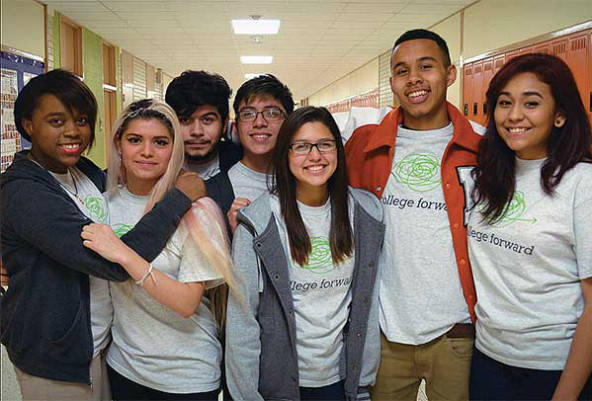With suicide prevention, every minute of response time matters. That’s why the technology team at the well-known nonprofit Crisis Text Line in New York City analyzed some 65 million text messages to determine what words were most statistically associated with a high risk of suicide. This scale of analysis would clearly be infeasible without some form of automated analysis, and its results surprised the team. Use of the term “EMS” in a text, for example, is five times more predictive of a high risk of suicide than the actual word “suicide.” By using this analysis, the team can now better prioritize incoming messages, much like the triage system in a hospital emergency department. As a result, the organization is now able to respond to 94 percent of high-risk texters in fewer than five minutes.
This is just one example of “mission-driven artificial intelligence”—the responsible application of artificial intelligence (AI) to solve societal and ecological challenges. Sometimes dubbed “AI for good,” mission-driven AI is the use of machine-learning techniques to streamline operations and enhance programs at nonprofits, nongovernmental organizations (NGOs), and social enterprises.
To be clear, AI is a broad term that captures the constantly evolving advances in machines’ capabilities to perform tasks that would ordinarily require human intelligence. Machine learning is a specific approach to AI that applies statistical techniques to data in order to train computers to perform tasks without explicit human programming of rules. “Deep learning” is, in turn, a type of machine learning that relies on techniques that learn multiple layers of representations, in a way that mimics how the brain processes data. In this article, we refer to AI to intentionally focus on the broader picture. Machine learning does account for the vast majority of AI research and development today, however, and we use this term when referring to specific projects that make use of this technique.
Using AI in a mission-driven context could supercharge the capacities of the social change sector. Specifically, it has the potential to lower costs, improve quality, and broaden the impact of social change organizations. Think of it as transforming these organizations from a VW Beetle into the USS Enterprise.
Are you enjoying this article? Read more like this, plus SSIR's full archive of content, when you subscribe.
The first step
We are now witnessing a Cambrian Explosion in machine learning, as algorithms defeat world champion Go players, drive cars, perform real-time translation via smartphone cameras, and streamline business processes that are already highly optimized—like reducing Google’s data center cooling bill by 40 percent.
These innovations will transform the nonprofit sector too. We predict that mission-driven organizations will initially adopt AI to build organizational capacity—improving effectiveness and sustainability by strengthening fundraising, marketing, administration, and other skills, processes, and resources. Capacity-building investments are often similar across organizations. One fundraising, accounting, or communications solution can, with a bit of tweaking, often meet the needs of many organizations. As a result, technology investments in capacity building can spread quite quickly through the nonprofit sector, and we expect this will be the case with machine learning-based solutions.
Many nonprofit organizations use relationship-management databases from Salesforce and Blackbaud to manage their fundraising. These services are already beginning to incorporate machine-learning features, which means organizations will soon be able to use data-driven models to predict donor behavior, and more accurately forecast year-end giving and other financial targets. The accounting package QuickBooks is another popular tool among nonprofits. It is also adding machine-learning features, particularly those aimed at automating the categorization of expenses and other accounting data. In this way, machine learning will simply become a new feature in known tools, and the barrier to using machine learning in these contexts will be relatively low.
Chatting for a mission
All of the biggest tech companies have developed chatbot technologies, which increasingly use AI to answer text-based queries, and made them available for other software developers to adapt for new uses. Chatbots help organizations improve their responsiveness by responding conversationally to requests for information and other simple questions, much like an automated frequently asked questions (FAQs). Corporate customer services are also increasingly deploying chatbots. For nonprofits, chatbots will play an important role in handling smaller donations and other, more routine interactions.
Chatbots can also be developed for more innovative applications. In 2016 the NGO charity: water created a chatbot that simulates conversations with a fictional Ethiopian girl named “Yeshi” as a way to raise awareness about access to clean water. Organizations are also experimenting with using chatbots for research purposes, such as interviewing people in Nigeria and Haiti on the state of food prices and food security.
Four obstacles to widespread adoption
The next phase in the adoption of machine learning in nonprofits and social enterprise will be slower, but its impact will be utterly transformational, as machine learning makes organizations smarter about what they do and drives down the cost of their work.
Before that transformation can take place, however, the field will need to overcome four obstacles. The first is funding. For organizations to benefit from AI beyond the specific application of capacity building, they will need tailor-made, program-related machine learning applications. Each individual organization will bear much of the cost of development of these specialty products. In the eyes of funders, that increases the risk of investing in these new technologies.
The second challenge, the complexity of developing machine learning systems, may be well on the way to solving itself. Just a few years ago, these technologies required many years of experience. New software development platforms from Google, Amazon, Microsoft, and others help automate the process of building machine learning systems, which lowers barriers and greatly expands the number of software developers capable of wielding these tools on the behalf of mission-driven organizations. With simpler tools and an ample supply of developers, costs should decline.
The third obstacle relates to the need for large-scale, high-quality, structured datasets, which are necessary to build machine learning systems. Companies like Salesforce and Intuit (the developer of QuickBooks) are able to draw upon the data of many customers, which solves this challenge for many capacity-building applications. When it comes to specific program-related applications, however, very few mission-driven organizations have enough data to train machine learning systems. Even those that do collect it often don’t have it in the structured formats necessary for machine learning applications.
One solution might be found in larger, better-curated government and third-party datasets. For example, the forest monitoring project Global Forest Watch and the technology nonprofit Rainforest Connection use machine learning to identify factors that contribute to forest losses in the Congo and the Amazon. And the sustainable fisheries initiative, Global Fishing Watch, analyzed some 22 billion messages from fishing boats to uncover illegal industrial fishing vessels. To tap into external data sources, organizations can also use data analytics solutions such as Tableau and Alteryx, which both have programs to help mission-driven organizations use their platforms.
 Machine learning and spatial modeling identify the main drivers of forest loss and predict its likely future locations in the Democratic Republic of the Congo. (Image courtesy of Global Forest Watch.)
Machine learning and spatial modeling identify the main drivers of forest loss and predict its likely future locations in the Democratic Republic of the Congo. (Image courtesy of Global Forest Watch.)
Another option is for mission-driven organizations to share data. College Forward, a tech-savvy college mentoring program, is training Salesforce’s machine-learning capabilities to automatically predict which students are most likely to drop out of school. The organization has licensed its technology to 40 other similar college success programs across the United States, impacting some 300,000 students. CEO Austin Buchin notes that the organization’s plan is to eventually help these partner programs pool their data with data-sharing agreements, and when they do, “the quality of the predictions is going to skyrocket.”
 Machine learning algorithms help identify factors of success for college-bound students at nonprofit, College Forward. (Photograph courtesy of College Forward)
Machine learning algorithms help identify factors of success for college-bound students at nonprofit, College Forward. (Photograph courtesy of College Forward)
The last obstacle is affordable, accessible computing infrastructure. The complex computational models and massive datasets that fuel machine learning place a tremendous burden on computing infrastructure. Luckily, Amazon, NVIDIA, Google, and Microsoft all host cloud computing services optimized for machine learning. All four companies have programs for nonprofits, and we expect all will soon extend their machine learning offerings to these programs.
The future of mission-driven AI
Eventually, mission-driven organizations will be able to integrate insights from machine learning in ways that allow them to automate aspects of their programs.
Some technically proficient mission-driven organizations have already launched such efforts. Project Skylight, funded by Microsoft co-founder Paul Allen, draws on satellites, vessel records, fishery regulations, and other data to enable countries to identify suspicious fishing activity and coordinate their responses in real time. Similarly, Rainforest Connection built a poaching and deforestation detection system that monitors audio-recording devices positioned in rainforests. The network is tied into a real-time alert system designed to catch poachers and illegal loggers.
But these examples are outliers. Most nonprofit organizations do not have a highly trained workforce of engineers, data scientists, and engineers. Nonetheless, we believe that many mission-driven organizations will begin adopting technological solutions to supercharge their capabilities and workflows. Already, there are tremendous opportunities for social entrepreneurs and technical people to contribute their expertise in applying machine learning for mission-driven organizations. Our hope is that the social change sector will more fully embrace machine learning as a way to strengthen its work, stretch philanthropic dollars, and expand its impact.
Support SSIR’s coverage of cross-sector solutions to global challenges.
Help us further the reach of innovative ideas. Donate today.
Read more stories by Gideon Rosenblatt & Abhishek Gupta.

